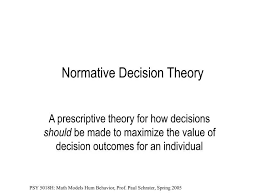Understanding Decision Making Model Steps
Decision making is a crucial skill in both personal and professional life. By following a structured decision-making model, individuals and organizations can make informed choices that lead to positive outcomes. Here are the common steps involved in a typical decision-making model:
- Identify the Problem: The first step is to clearly define the issue or problem that needs to be addressed. This step sets the foundation for the rest of the decision-making process.
- Gather Information: Once the problem is identified, gather relevant information and data that will help in understanding the situation better. This may involve conducting research, analyzing data, or seeking input from others.
- Identify Alternatives: Brainstorm and generate possible solutions or alternatives to address the problem. Consider different perspectives and approaches to come up with a range of options.
- Evaluate Alternatives: Assess each alternative based on criteria such as feasibility, cost, risks, and potential outcomes. Compare the pros and cons of each option to determine which one aligns best with your goals.
- Make a Decision: After evaluating all alternatives, make a decision on the course of action to take. Choose the option that best meets your objectives and has the highest likelihood of success.
- Implement the Decision: Put your chosen plan into action by outlining specific steps, assigning responsibilities, and setting deadlines. Effective implementation is crucial for turning decisions into tangible results.
- Evaluate the Decision: Monitor and assess the outcomes of your decision to determine its effectiveness. Reflect on what worked well and what could be improved for future decision-making processes.
By following these steps in a decision-making model, individuals can approach complex problems with clarity and confidence. Remember that decision making is an iterative process, and continuous improvement is key to making better decisions over time.
Top 5 Benefits of Using a Structured Decision-Making Model
- Provides a structured approach to decision making.
- Helps in clearly defining the problem or issue at hand.
- Encourages gathering and analyzing relevant information.
- Facilitates brainstorming and evaluating multiple alternatives.
- Promotes informed and strategic decision making.
Drawbacks of Rigid Decision-Making Models: Time, Creativity, Information Overload, and Intangible Factors
- Decision making model steps can be time-consuming, especially when dealing with complex or urgent issues.
- Following a rigid decision-making model may limit creativity and innovative thinking in exploring alternative solutions.
- There is a risk of information overload when gathering data and evaluating alternatives, leading to decision paralysis.
- Implementing decisions based solely on a structured model may overlook important intangible factors or gut instincts that could influence outcomes.
Provides a structured approach to decision making.
One of the key advantages of decision-making model steps is that they provide a structured approach to the decision-making process. By following a systematic framework, individuals and organizations can navigate complex problems with clarity and purpose. This structured approach helps in breaking down the decision-making process into manageable steps, making it easier to identify key issues, gather relevant information, evaluate alternatives, and ultimately make a well-informed decision. The clear structure offered by decision-making models ensures that all aspects of the decision are carefully considered, leading to more effective and successful outcomes.
Helps in clearly defining the problem or issue at hand.
One significant benefit of following decision-making model steps is that it assists in clearly defining the problem or issue at hand. By starting the process with a focus on identifying and understanding the problem, individuals can gain clarity on what needs to be addressed. This step sets a solid foundation for the rest of the decision-making process, enabling individuals to gather relevant information, generate alternatives, and evaluate options effectively. Clearly defining the problem ensures that decisions are made based on accurate assessments of the situation, leading to more successful outcomes.
Encourages gathering and analyzing relevant information.
One of the key benefits of following a decision-making model is that it encourages the gathering and analysis of relevant information. By emphasizing the importance of collecting data and insights related to the problem at hand, individuals can make more informed decisions. This step ensures that decisions are based on facts and evidence rather than assumptions or biases, leading to more effective outcomes. Gathering and analyzing relevant information also helps in understanding the complexities of the situation, enabling decision-makers to consider all factors before choosing the best course of action.
Facilitates brainstorming and evaluating multiple alternatives.
One of the key benefits of following a decision-making model with structured steps is that it facilitates brainstorming and evaluating multiple alternatives. By systematically going through the process of identifying the problem, gathering information, and generating possible solutions, individuals or teams are encouraged to explore a wide range of options. This approach helps in considering different perspectives, weighing the pros and cons of each alternative, and ultimately making a more informed decision based on thorough evaluation. By encouraging creativity and critical thinking, decision-making models promote a comprehensive assessment of choices, leading to better outcomes in the long run.
Promotes informed and strategic decision making.
One significant advantage of following decision-making model steps is that it promotes informed and strategic decision making. By systematically going through the process of identifying the problem, gathering information, evaluating alternatives, and making a decision based on careful analysis, individuals and organizations can ensure that their choices are well-informed and aligned with their goals. This approach helps in considering all relevant factors, weighing the potential outcomes, and selecting the best course of action to achieve desired results. Ultimately, by following a structured decision-making model, individuals can make decisions that are not only thoughtful but also strategic in nature, leading to more successful outcomes in the long run.
Decision making model steps can be time-consuming, especially when dealing with complex or urgent issues.
One significant drawback of decision-making model steps is the potential for time-consuming processes, particularly when faced with complex or urgent issues. The structured nature of decision-making models, while beneficial for thorough analysis and evaluation, can also slow down the decision-making process. In situations where quick decisions are required or when dealing with intricate problems that demand extensive research and consideration of multiple alternatives, following each step of the model can lead to delays in reaching a resolution. This time constraint may hinder the ability to respond promptly to urgent matters or adapt swiftly to rapidly changing circumstances, highlighting a notable challenge posed by decision-making model steps.
Following a rigid decision-making model may limit creativity and innovative thinking in exploring alternative solutions.
One notable drawback of adhering strictly to a decision-making model is that it can stifle creativity and innovative thinking when considering alternative solutions. By following a rigid set of steps, individuals may feel constrained by the prescribed process, leading to a narrow focus on predetermined options rather than exploring unconventional or out-of-the-box ideas. This limitation can hinder the potential for breakthrough solutions that could arise from more flexible and creative approaches to decision making. Embracing a more open-minded and adaptive mindset, alongside structured decision-making models, can help balance the need for structure with the freedom to think creatively and foster innovation in problem-solving processes.
There is a risk of information overload when gathering data and evaluating alternatives, leading to decision paralysis.
One significant drawback of following decision-making model steps is the risk of information overload. When individuals or organizations gather excessive data and evaluate numerous alternatives, it can result in decision paralysis. The abundance of information can overwhelm decision-makers, making it challenging to process and prioritize the data effectively. This can lead to delays in decision-making, missed opportunities, and ultimately hinder the ability to make timely and effective choices. Striking a balance between gathering sufficient information and avoiding information overload is crucial to prevent decision paralysis and ensure that decisions are made efficiently and confidently.
Implementing decisions based solely on a structured model may overlook important intangible factors or gut instincts that could influence outcomes.
Implementing decisions based solely on a structured decision-making model may overlook important intangible factors or gut instincts that could influence outcomes. While structured models provide a systematic approach to decision making, they may not account for nuanced variables such as emotions, intuition, or unforeseen circumstances. Relying too heavily on a rigid model can limit creativity and flexibility in decision making, potentially leading to suboptimal outcomes. It is essential to strike a balance between following a structured process and allowing room for intuition and subjective judgment in order to make well-rounded and holistic decisions.




